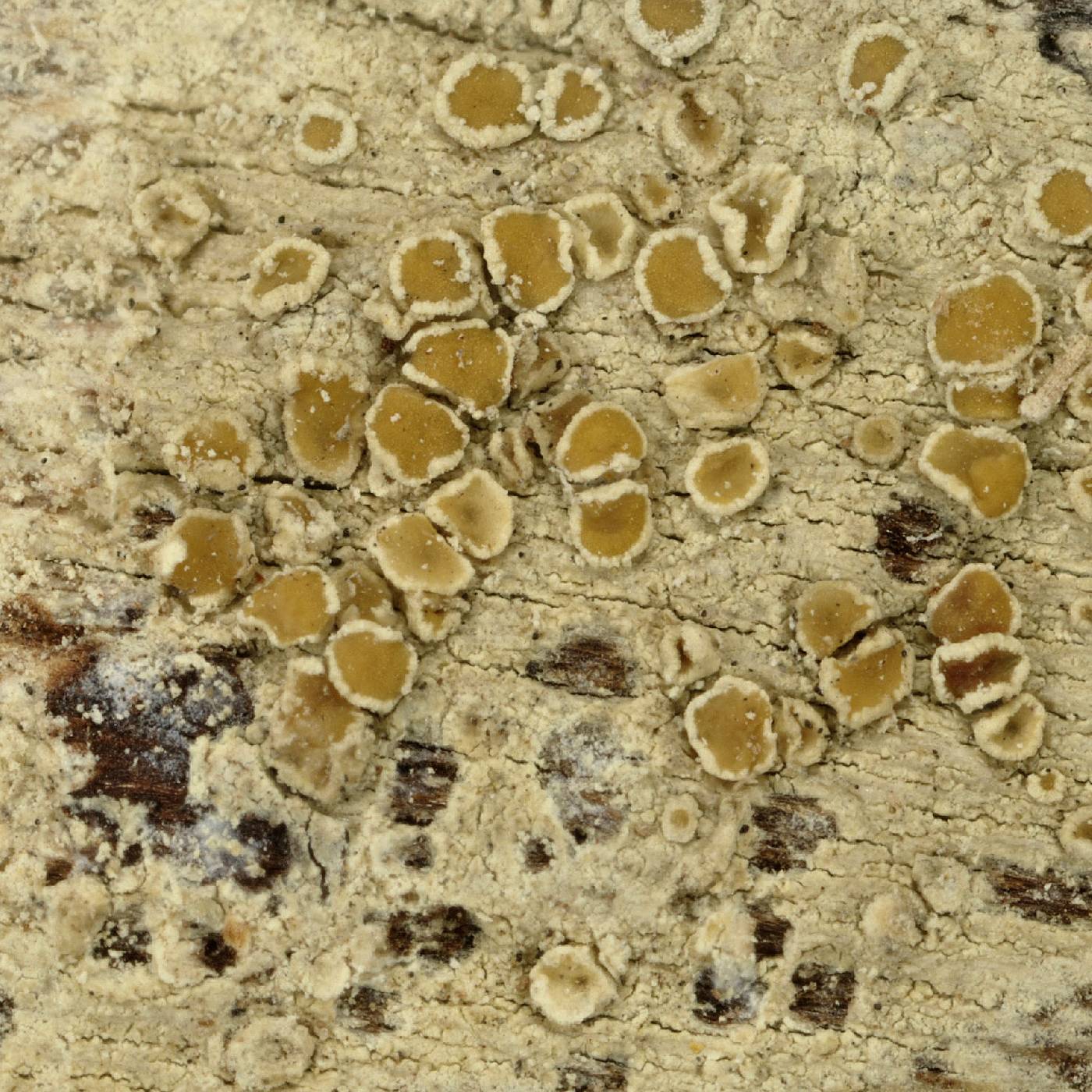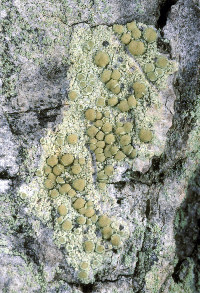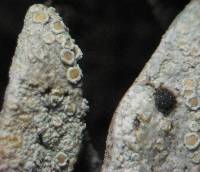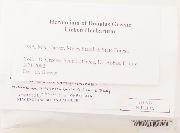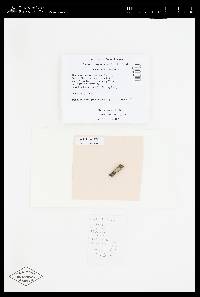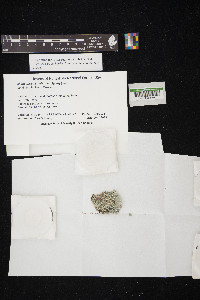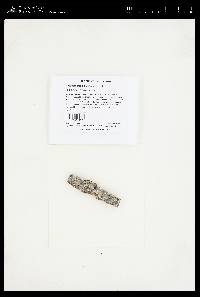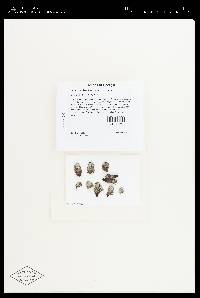
- Home
- Search
- Images
- Species Checklists
- US States: O-Z >
- US National Parks
- Central America
- South America
- US National Parks
- Southern Subpolar Region
|
|
|
|
Family: Lecanoraceae
Mealy Rim Lichen
[Lecanora conizaea f. strobilina (Spreng.) H. Olivier, moreLecanora conizaea var. strobilina (Spreng.) Flagey, Lecanora strobilina Ach., Lecanora strobilina Ach. nom. illegit., Lecanora symmicta f. strobilina (Spreng.) H. Olivier, Lecanora varia f. strobilina (Spreng.) Flagey, Lecanora varia var. strobilina (Spreng.) Th. Fr., Parmelia strobilina Spreng.] |
Lecanora strobilina: MycoBank no. 389285 Basionym: Parmelia strobilina Sprengel [MycoBank no. 398313] Type: France. Mediterranean region, exact locality unknown, original label data: “Gallia merid[ionalis], Pin[us] marit[ima]”, non Lecanora strobilina Ach. nom illegit. [MycoBank no. 616529] Taxonomic note: According to Laundon (1967, p. 147) the combination published by Kieffer (1895), based on Sprengel’s basionym Parmelia strobilina must be considered legitimate, and not the name that Acharius (1814) introduced, but himself at the time did not accept. Acharius (1814) listed the name L. strobilina Ach. in his Omissa & Emendanda. According to Laundon (1967) the name must be considered illegitimate, because, while introducing that name, Acharius (1814, p. 341) clearly considered the taxon to be included within Lecanora symmicta: “... Lecanora strobilina & var. betulina. Deleantur, utpote tantum varietatem Lecanora symmictae constituentes. ...” (Shenzhen Code Art 36.1). Description. Thallus corticolous or lignicolous, thin to moderately thickened, often endosubstratal in part, granular-verrucose, granules ±coalescent, forming a rimose-areolate crust; surface strongly yellowish green or greenish to grayish yellow, matt (in the herbarium developing a fine cover of whitish crystalline needles), lacking soredia; prothallus a blackish line where different thalli meet. Apothecia sparse to numerous, circular or ±irregular, often densely crowded, 0.3–0.7(–0.9) mm in diam., adnate to sessile, with a distinct lecanorine, ±prominent thalline margin, usually persistent, but with a tendency to be folded back and thus often becoming excluded at least in part, concolorous with or slightly paler than the thallus, coarsely pruinose; disc soon convex, deep yellowish beige to orange, with a greenish to pinkish hue, but not blackened, matt, epruinose or rarely with very fine, inconspicuous pruina; hymenium hyaline, or rarely with a pale yellow tinge, not inspersed; epihymenium with small orange brown granules, soluble in K, lacking distinct crystals, fuscous brown (elachista-brown: dissolving in K, HCl± dull greenish, N−); proper exciple thin, indistinct; thalline exciple without a true cortex, of irregularly entangled, short-celled hyphae, densely filled with small brownish granules that are insoluble in K; subhymenium hyaline to pale yellow, hypothecium hyaline; ascospores 8/ascus, colorless, simple, ellipsoid, (8.5–)10.6–12.4(–16.5) × (3.0–)3.3–3.8(–4.5) μm (n = 30). Pycnidia not seen. Chemistry. Thallus cortex including apothecial margin P−, C−, KC± yellowish brown, K± yellowish brown, UV−(dull); containing usnic acid [major], decarboxysquamatic acid [minor], squamatic acid [minor], zeorin [minor]; [specimens analyzed with TLC: Aptroot, A. 65420 (CDS 32006); Bungartz, F. 7494 (CDS 37981), 7728 (CDS 38232), 8198 (CDS 40844), 8201 (CDS 40847); Nugra, F. 124 (CDS 32778)]. Ecology and distribution. A temperate to Mediterranean species (North America, North Africa, SW Europe; see Ryan et al. 2004), new to South America, Ecuador and the Galapagos; moderately common in dry and transition zone vegetation, in open woodland and scrub, in sunny, exposed habitats, on bark, wood or dried plant debris. Notes. Lecanora strobilina always lacks xanthones so that the conspicuous yellowish green thalli do not fluoresce under UV and are always C−/KC−. On prolonged storage herbarium specimens often develop a fine, whitish 'fur' of needle-shaped crystals due to high concentrations of terpenes (previously observed by Printzen 2001). Superficially this species resembles L. confusoides which often occurs in similar habitats. However, all specimens of L. confusoides contain xanthones and react C+/KC+ orange; this species typically has a duller thallus and herbarium specimens never develop a coating of terpene crystals. Further, the apothecia of L. confusoides are regularly discolored with an olivaceous to grayish black tinge. Lecanora strobilina is readily characterized by its unusual secondary chemistry: decarboxysquamatic acid can be detected by TLC, appearing as a pale beige to pale green spot, fluorescing brightly blue in long wave UV (λ 365), often with a long bluish tail after H2SO4 treatment and heating. In solvent C the spot develops just below zeorin. Nash, T.H., Ryan, B.D., Gries, C., Bungartz, F., (eds.) 2004. Lichen Flora of the Greater Sonoran Desert Region. Vol 2. Thallus: crustose, poorly developed or granular-warted with areoles often coalescing to form a scurfy or rimose crust areoles: (weakly to) strongly convex, 0.10-0.25 mm in diam., ecorticate but sometimes with a loose unorganised algal free layer of various hyphae surface: greenish to yellowish gray, dull, sometimes covered with terpenoid crystals, esorediate Apothecia: rounded or slightly irregular in outline, rarely single, mostly densely crowded, sessile with a weakly constricted base, 0.30-0.40(-0.90) mm in diam. disc: yellowish ochre to orange-brown, often with a pinkish hue, flat to moderately or rarely strongly convex, dull, finely white pruinose margin: white, pale gray or more rarely of same color as the thallus, weakly prominent, persistent or excluded, dull, without a parathecial ring amphithecium: present, with an algal layer, laterally 50-100 µm, basally (45-)60-180 µm wide, filled with small brownish granules (soluble in K), irregularly entangled, short-celled hyphae with lumina 1.5-2.0 µm wide, without a true cortex parathecium: hyaline, 15-45 µm wide epihymenium: greenish ochre to orange-brown, granular granules (soluble in K), 5-15 µm high hymenium: hyaline or rarely pale yellow or ochre, (35-)40-50 µm tall; paraphyses: simple or weakly, rarely moderately branched and anastomosing near base of hymenium, with lumina basally 0.7-1 µm wide and apically 1-1.5 µm wide; subhymenium: hyaline, 30-65 µm thick; hypothecium: hyaline or pale yellow, 35-135 µm thick asci: clavate, 8-spored ascospores: hyaline, simple, narrowly ellipsoid, (8.5-)10.6-12.4(-16.5) x (3-)3.3-3.8(-4.5) µm Pycnidia: not observed Spot tests: thallus K-, C-, KC-, P- Secondary metabolites: usnic acid, decarboxysquamatic acid and ±zeorin. Substrate and ecology: sometimes endosubstratal, mostly on twigs and pine scales, more rarely on trunks in lowland coastal regions World distribution: North Africa, North America and SW Europe Sonoran distribution: Southern California, Baja California and Baja California Sur Notes: Lecanora strobilina is closely related to L. americana, L. confusa, L. perconfusa and L. substrobilina. Diagnostic features are the content of decarboxysquamatic acid and comparatively small apothecia, which tend to exclude the thalline margin and become more or less biatorine in appearance. From L. confusa it can further be distinguished by narrower ascospores. |
|
|
|

